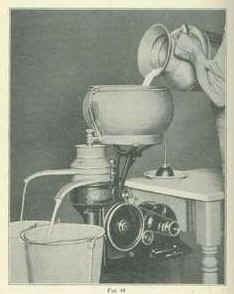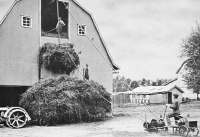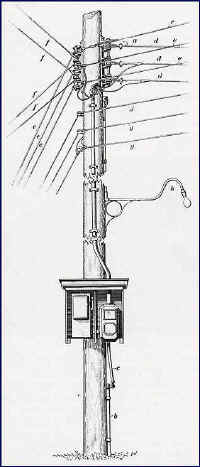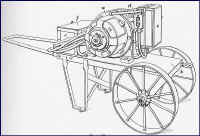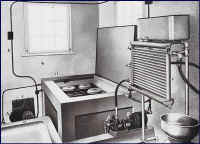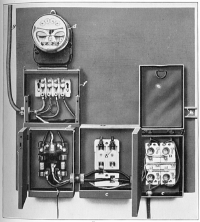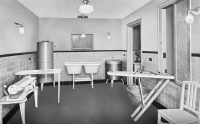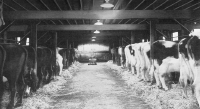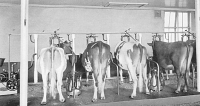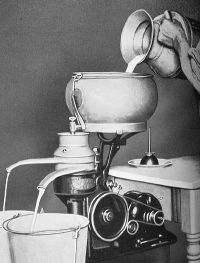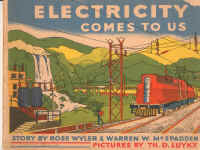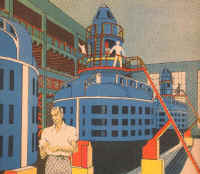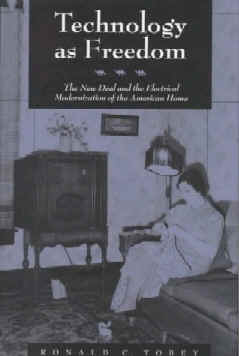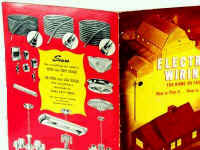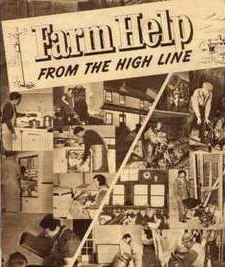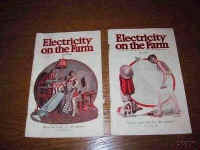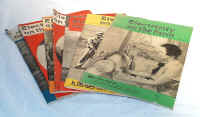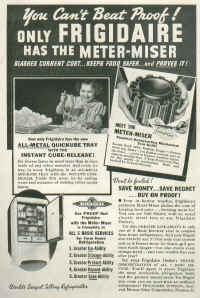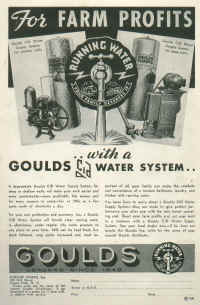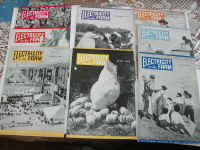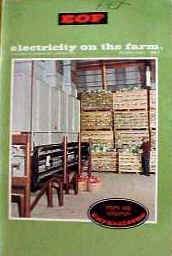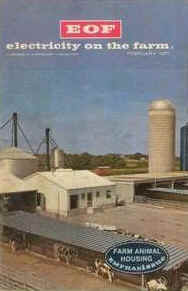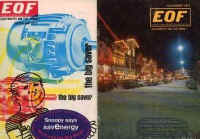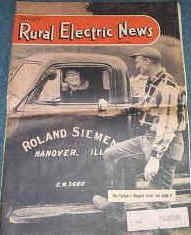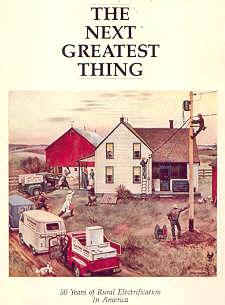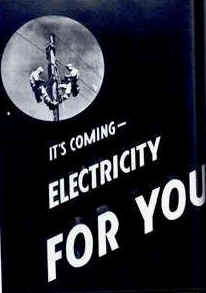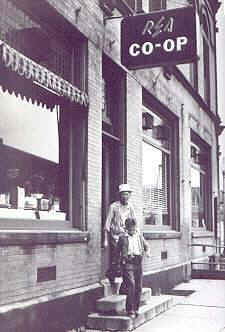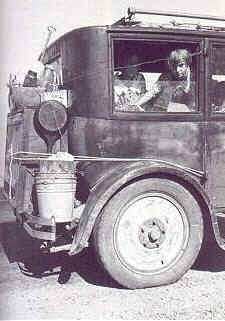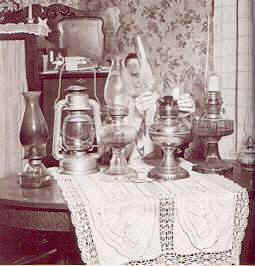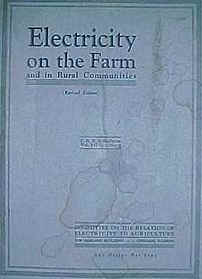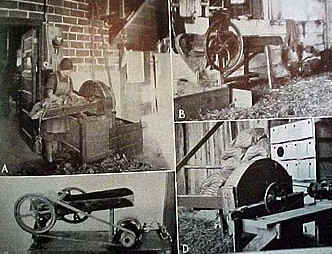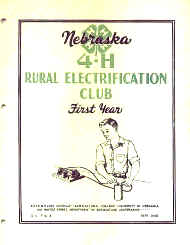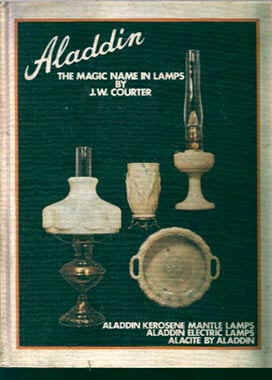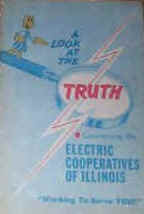|
Books relating to Rural Electrification.
|
|
|
Farm Wiring for Light and Power
The 109- page volume was written by C. H. Sprague, Principal, School of Electrical Engineering in Collaboration with E. A. Brand, Commercial Engineer of the Niagara Hudson Power Corporation, and published in 1937 by the International Textbook Company. This is from that great little set of books put out by international textbook company, which was part of the ICS correspondence school. Finely illustrated with engravings of vintage farming and electrical equipment throughout.
Chapter Highlights include: Electricity on the Farm; Farm Electrical Systems; Electric Light and Power Company Lines; Individual Farm Lighting Plants; Farm Hydroelectric Plants; Windmill Plants; Power Company Lines and Service Wires; The Primary Line; General Plan of Primary and Secondary Wires; The Farm Transformer; Voltage Regulation; Secondary and Service Drop Wires; Meter Location; Service Entrance Wires; Switches; Wiring Farm Buildings; Distribution System; Distribution Panels; Wiring Design; Wiring the Farm House; Poultry House; Outbuildings; Yard Lighting; Selection of Wiring Devices; Grounding the Circuit for Protection; Wiring Maintenance and Precautions; Farm Motors; Types of Farm Motors; Farm Electric Applications; and more. |
|
|
ELECTRICITY COMES TO US ELECTRICITY COMES TO US, STORY BY ROSE WYLER & WARREN W. McSPADDEN, PICTURES BY TH. D. LUYKX. PAPERBOUND 8-1/2"X9-1/2", 30 PAGES, VERY GOOD CONDITION SOME FOXING. INCREDIBLE ILLUSTRATIONS EXPLAINING ALL ABOUT ELECTRICITY TO CHILDREN IN RURAL AMERICA ABOUT TO RECEIVE ELECTRICITY AND IT'S BENEFITS FROM THE GREAT HYDRO-ELECTRIC PROJECTS IN AMERICA DURING THE 1930s
|
|
|
Technology As Freedom : The New Deal and
the Electrical Modernization of the American Home
|
|
|
1952 Electric Wiring For Home Or Farm Book A really neat little book put out by Sears, Roebuck & Co. in the early 50's, when the Rural Electrification program had taken hold. The pages are filled with illustrations of contemporary electrical appliances and text explaining how much labor-saving can be accomplished with the conversion from old-fashioned, manual methods (outhouse, hand pump) to the modern (indoor plumbing, electric stove). |
|
|
(PA or OH?: Westinghouse, circa 1930s). Very good condition, stapled self wrapper, slight edge or surface wear. Illustrated by photos. Paperbound. 19 pages.
Section on refrigerators highlights a housewife in Greer, South Carolina who, like other farm women, claims her cost savings and economy is in addition to not having to go into town as often to shop ("Saves Trips to Town!"). Cost and energy savings are also stressed in the illustrated pages on milk coolers, heaters for work shops and poultry houses, electric motors, etc. Item is identified as Cat. 837-A |
|
|
Electricity on the Farm This magazine grew with the technology and changed size but with the ever-present theme of making the farm owner's live easier through the use of electricity. Below you will find some samples.
The 20's
"Electricity on the Farm from 1928" The 30's
Electricity On the Farm 7 Issues 1937-1938 printings Wonderful antique issues of Electricity on the Farm, measures approx.6"x9.75", with fascinating articles, illustrations, beautiful cover art, numerous vintage advertisement, issues included are: July-Nov-1937, Feb-Mar-1938
The 40's
"Electricity on the Farm from the 40's" The 60's
This is an old February 1967 issue of Electricity on the Farm - a magazine for the contemporary farmer. Published by Reuben H. Donnelly, the magazine features such articles as irrigation, flower growers, cabbage storage, greenhouse controlled rain, FFA and 4-H, farm retailing, apple growers and fluorescent lighting for melon seedlings. Terrific period advertisements for major electricity providers such as Niagara Mohawk, Electromode, Edison Electric Institute and Aerovent. The 70's
EOF - Electricity on the Farm 1971 EOF - Electricity on the Farm - Feb 1971 - Reuben H. Donnelley Publication - Farm Animal Housing Emphasissue - articles on: Electrically-heated cage brooding (chickens); Mechanized feed processing units; Jerry Savage, Mt. Airy, MD - dairy farm article - a round automated dairy barn [discussion of an experimental Round Barn built at Rutgers in 1968] - Hot Water heated greenhouses - Agricultural engineers mechanize broiler production - modular buildings for raising pigs - modular bathrooms save construction time - 34 pages - paper cover - 6 x 9 inches. E.O.F. Electricity on the farm. 6"x9" 34 pages each. 2 booklets Nov, and Dec 1973. Cover photo is Leavenworth Washington. Articles on: Boiler handling, automated feed making systems, selecting motors and energy, energy conservation, fryer rabbits, developing a rural water system, articles for home makers, cooking, sewing and appliances. |
|
|
ILLINOIS RURAL ELECTRIC NEWS, June, 1956, Vol. 13, No. 12, published monthly by Association of Illinois Electric Cooperative, 20 pages. Cover shows farmer Roland Siemen and his wife from Hanover, Illinois. Articles inside include: Dairyman Bill Kensil of Shelbyville; Eugene Fulton pig hatchery in Scottland, Edgar County; kitchen wiring problems; El Dorado all electric farms signs; recipes; housewives making money with their sewing machines; Dongola Veneer Company; Electric Co-op News from: Mt. Vernon, Camp Point, Steeleville, Macomb, Eldorado, Greenville, Elizabeth, Newton, Dongola, Carlinville, and Bloomington. |
|
|
The Next Greatest Thing ISBN: 0917599004 Publisher: NRECA-National Rural Electric Coop Assoc. Publish Date: November, 1984
50 years of rural electrification in America.Copyright in 1984
The title of this hard cover with dust jacket book is The Next Greatest Thing - editor Richard A. Pence. Original price $29.85. The editors have woven simple, yet profound, illustrations of how Americas rural people got lights" with some of the finest examples of Americas great photographic artists (including Arthur Rothstein, Russell Lee, John Vachon, Jack Delano, Dorthea Lange, Walker Evans, Margaret Bourke-White, Marion Post Wolcott, Esther Bubley, John Collier). The result is a remarkable collection of more than 700 of the finest photographs ever taken of rural America and its institutions. From the inside description: The Next Greatest Thing is a remembrance that captures in photograph and phrase the magic of one of America's greatest 20th Century social and economic achievements - the lighting of rural America. From this book clearly emanates the drama of that experience: Life in a rural America resigned to the wretched darkness, the agonizing drudgery, the despair - then the stirrings, the hopes and the cooperative commitment to get power for a forgotten people.
THE NEXT GREATEST THING is a remembrance that captures in photograph and phrase the magic of one of America's greatest 20th Century social and economic achievements the lighting of rural America. From this book clearly emanates the drama of that experience: Life in a rural America resigned to the wretched darkness, the agonizing drudgery, the despair - then the stirrings, the hopes and the cooperative commitment to get power for a forgotten people. The story begins with telling photographic evidence of the drudgery of life in a rural America without electricity. The evidence is narrated with great sensitivity in the words of Robert A. Caro from the memorable chapter "The Sad Irons" in his biography of Lyndon Johnson, The Path to Power. The ceaseless cycle of labor for the farm wife is powerfully portrayed: Washing, ironing, cooking, canning, shearing, helping with the plowing and the picking and the sowing, and every day, carrying the water and the wood, and because there was no electricity, having to do everything by hand and by the same methods that had been employed by her mother and grandmother and great-great-grandmother before her. Because there was no electricity: THE NEXT GREATEST THING presents in vivid detail the story of how this cycle of labor and pain was ended. The foundation was laid in America's turn-of-the-century Progressive era. The tools for doing the job finally came with the creation of the Rural Electrification Administration in 1935 by President Franklin D. Roosevelt. What that "REA Co-op" sign and the coming of electricity meant to rural families was captured in the recollections of a land buyer for the Tennessee Valley Authority. Traveling a country road at dusk in the early 1940s, the land buyer came upon a farmer sitting on a little knoll overlooking his newly electrified farm. As the farmer gazed down at his house, barn and smokehouse ablaze with light, he had a special look of wonder on his face. About a week later the TVA man attended the church to which this farmer belonged. During the service, the farmer got up to give witness: Brothers and sisters, I want to tell you this. The greatest thing on earth is to have the love of God in your heart, and the next greatest thing is to have electricity in your house. Thousands of rural Americans still understand the truth of those words. "The night the lights came on" is recorded as a high moment in their lives, an important date, ranking with marriages and births. The editors have woven these simple, yet profound, illustrations of how America's rural people "got lights" with some of the finest examples of America's great photographic artists (including Arthur Rothstein, Russell Lee, John Vachon, Jack Delano, Dorthea Lange, Walker Evans, Margaret Bourke-White, Marion Post Wolcott, Esther Bubley, John Collier). The result is a remarkable collection of more than 700 of the finest photographs ever taken of rural America and its institutions. The illustration on the cover of a High Plains farm family getting "hooked up" as rural electrification finally reached out to the remotest rural regions of the U.S. was painted in the late 1950s by the noted rural illustrator John Falter
|
|
|
Soft covered book - Electricity on the Farm and in Rural Communities, Revised Edition - Published by the Committee on the Relation of Electricity to Agriculture - C.R.E.A. Bulletin Vol. 7 No. 1. It contains 332 pages of information, and hundreds of wonderful photographs (see above).
|
|
|
A 32 page booklet from the Extension Service, Ag College University of Nebraska and US Dept of Ag, dated Sept 1948...$-H Rural Electrification Club First Year. Full of illustrations and text dealing with Electricity, wiring, reading the electric meter, uses and consumption.
|
|
|
ALADDIN : The Magic Name In Lamps by J.W.COURTER. "Eighty years ago a very small boy on a Nebraska farm read and reread the Arabian Night’s story of Aladdin in a room of darkness but for the flickering yellow light of an open flame “coal oil lamp.” Several years later that boy, grown to manhood, found a lamp that erased the darkness with a soft white light and it was only natural that he named the lamp “Aladdin.” An appropriate name, indeed, for this revolutionary boon to rural America seemed to be nothing short of magical in the intensity of its light. For those who lit the lamp, trimmed its wick and cleaned its chimney, or just enjoyed its friendly glow, the Aladdin lamp recalls many memories of golden childhood. It made learning possible for many boys and girls; made it possible for them to acquire knowledge that helped them realize their dreams and aspirations. Later, Aladdin brought this white light to every kind of habitat in every corner of the globe. For many, it has been the only light of their entire life. Even when electricity comes, there are a loyal few who profess to use the electric light only “to find the match” to light their Aladdin. When I read Professor Courter’s book, it not only brought back the nostalgic memories identified with our company’s early days and the people who shaped them, but also disclosed much about Aladdin’s past that only the inspired resourcefulness and dedication of the author could reconstruct. I am grateful that he became enamoured with the Aladdin Lamp as a part of Americana. I hope that this book will help you share with him his interest in this part of our prairie past and perhaps you, too, can enjoy not only beginning your Aladdin collection, but adding to its history. There were few country roads in 1909, only well-marked ruts and trails for horses and wagons. Over one-half of the ninety-two million people in the United States lived in small towns or on farms. Most of them had never even seen an automobile. Rural homes did not have conveniences now taken for granted—central heat, rural mail delivery, telephones, running water, indoor bathrooms, or good lighting. Among the many changes that were to~come was the bright white light of the Aladdin Mantle Lamp. The lamp culminated five decades of invention that began when Colonel E. L. Drake drilled the first oil well in Pennsylvania in 1859. Over 1000 gallons of petroleum a day gushed from the well and the price dropped from one dollar per gallon to one dollar per barrel (42 gallons). The resulting plentiful supply of lighting oils, called kerosene, coal oil, and paraffin, stimulated research on lighting devices. During the ensuing years nearly one hundred patents per year were granted for improvements in kerosene-burning lamps. The popular kerosene lamps in the 1890’s used round wicks. They were constructed on the Argand principle of supplying air to the flame through a central draft tube. The round wick provided a larger burning surface and gave more light but it consumed more oil than the common flat wick lamp. Furthermore, the flame was yellow, it flickered, and the lamp emitted smoke and odor in the home. Nevertheless, these lamps were an improvement in kerosene lighting. Meanwhile in Europe, Baron Carl Freiherr Auer von Welsbach, an Austrian chemist, invented the incandescent mantle. Welsbach received his first mantle patent September. 23, 1885. By 1890 he had developed a mantleimpregnating formula which has remained virtually unchanged ever since. Finally the incandescent mantle was coupled with the Argand” burner to give the brightest white light ever produced from kerosene. One American lamp—the Aladdin —demonstrated the superiority of this combination more than any other lamp. It was without question the leader in kerosene incandescent home lighting for more than fifty years." |
|
|
A Look At the Truth concerning the ELECTRIC COOPERATIVES OF ILLINOIS, published by Association of Illinois Electric Cooperatives, Springfield, Illinois, 43 pages. No date, but booklet mentions something scheduled to be done in late 1963. "Vicious and unwarranted charges have been leveled against the Electric Cooperatives by powerful commercial utility companies, related organizations and persons with vested interests in the commercial utilities...In this booklet we will present ALL of the TRUTH - not half truths - so that an accurate picture of the rural electrification program may be available, and that the contributions of the Electric Cooperatives to all Illinois citizens may be fairly presented and correctly understood." "Willie Wirehand - a Symbol of PROGRESS for Illinois..."
|
|
